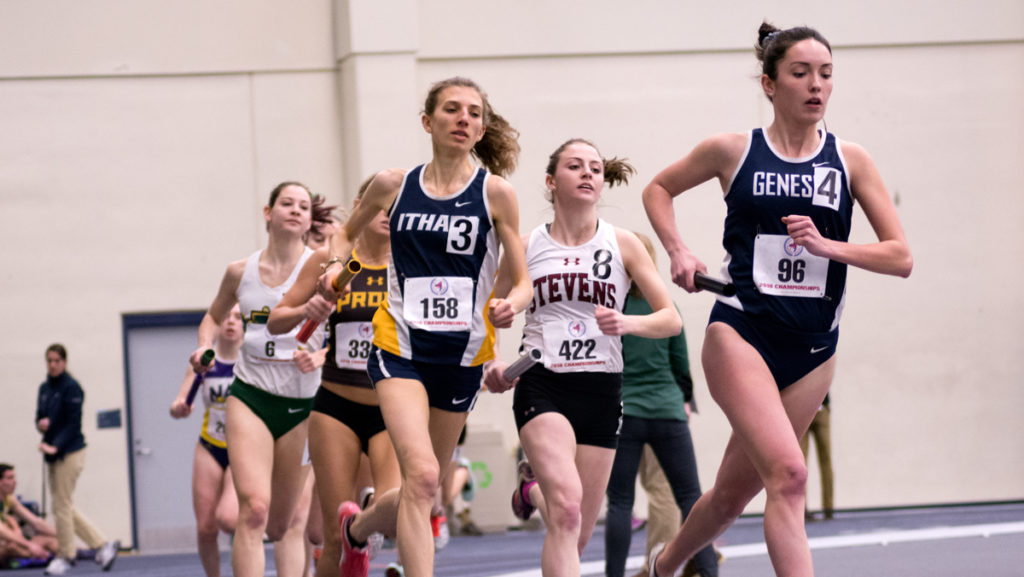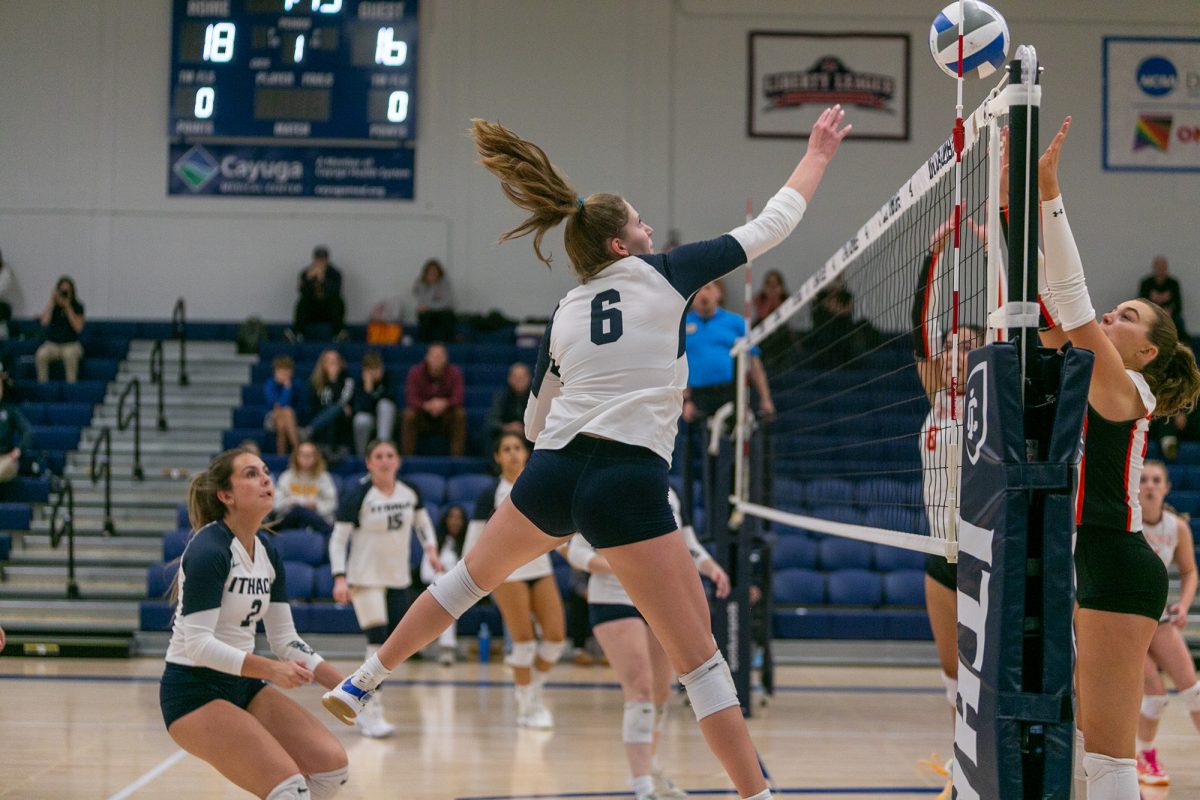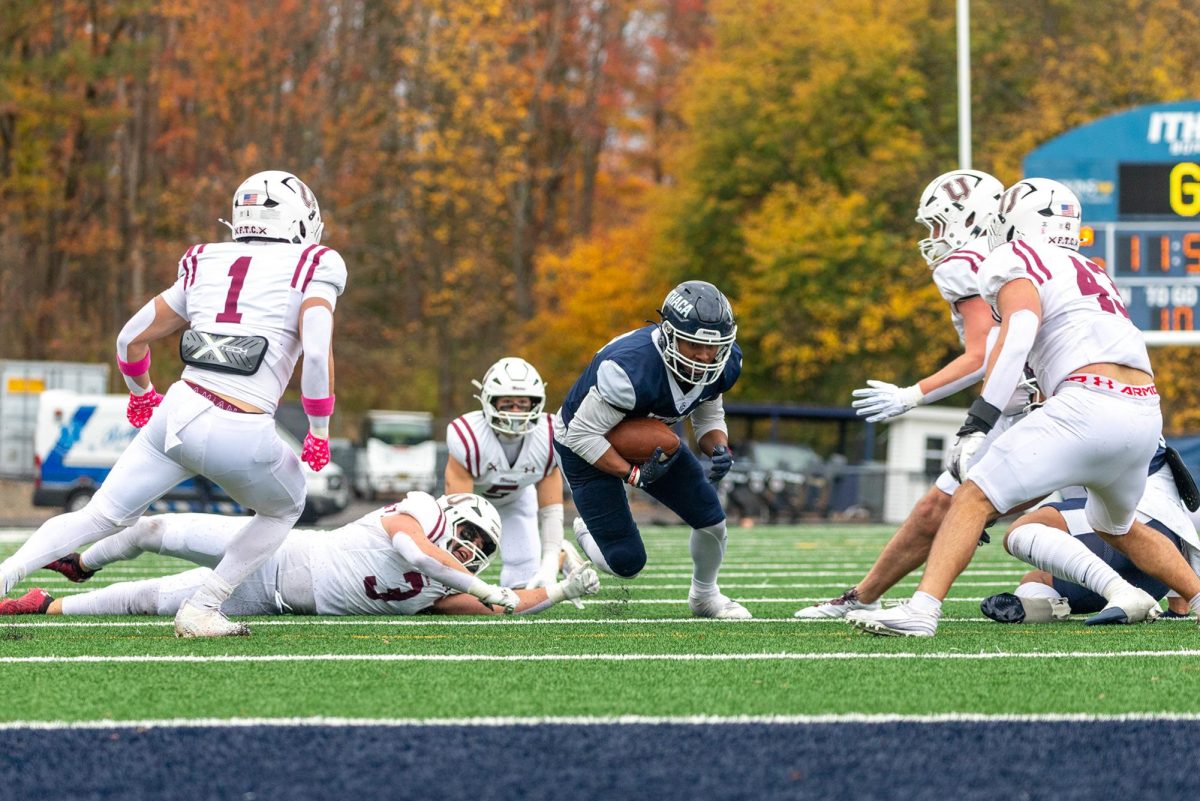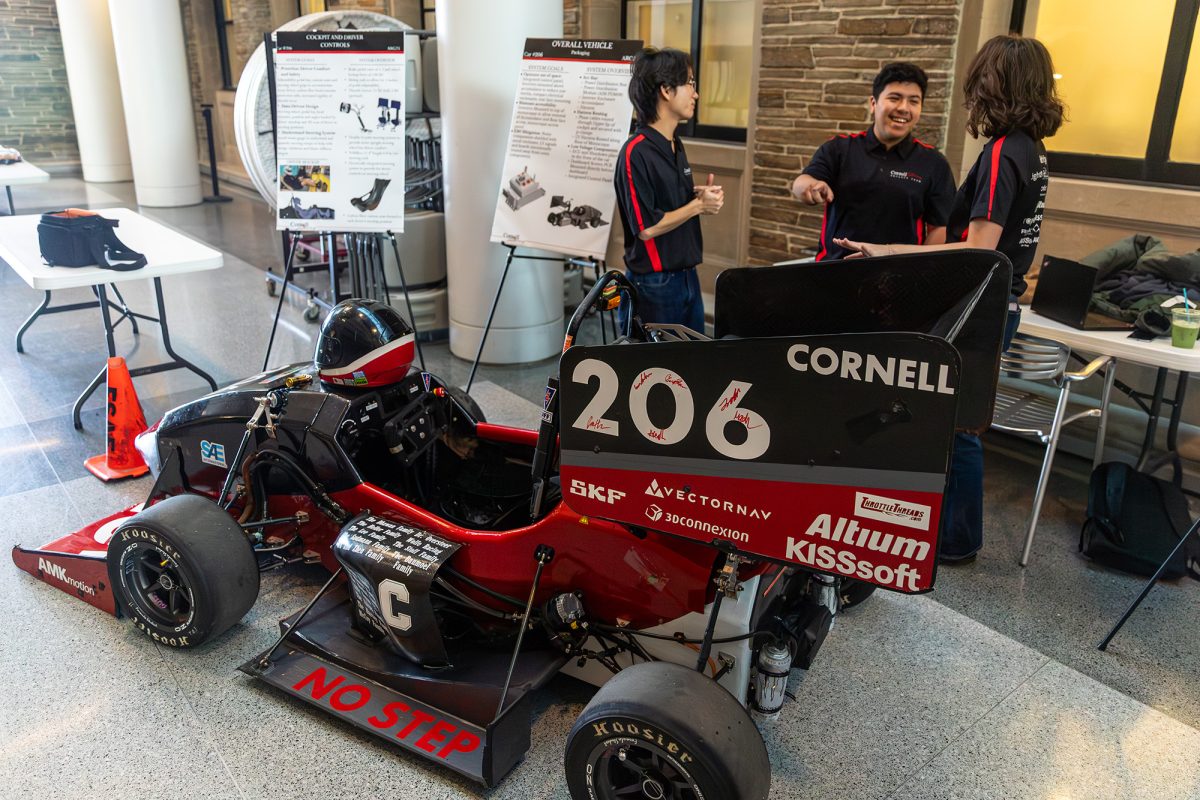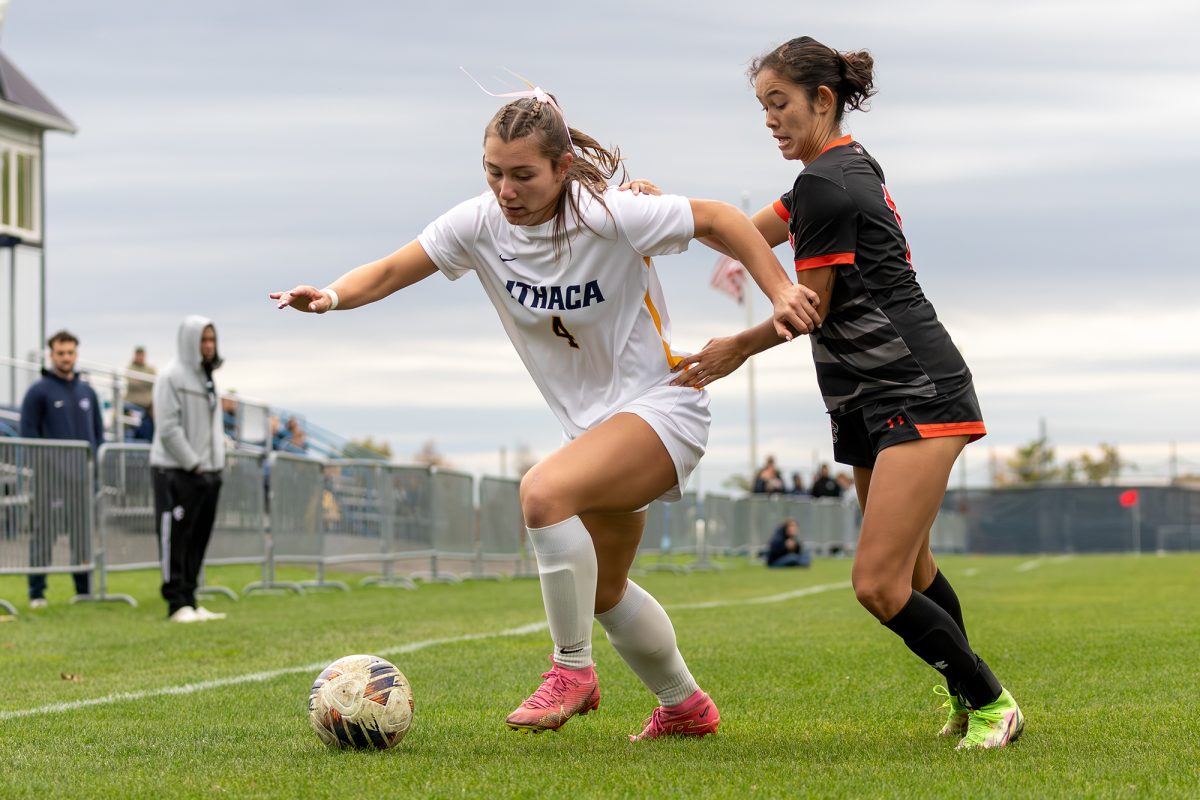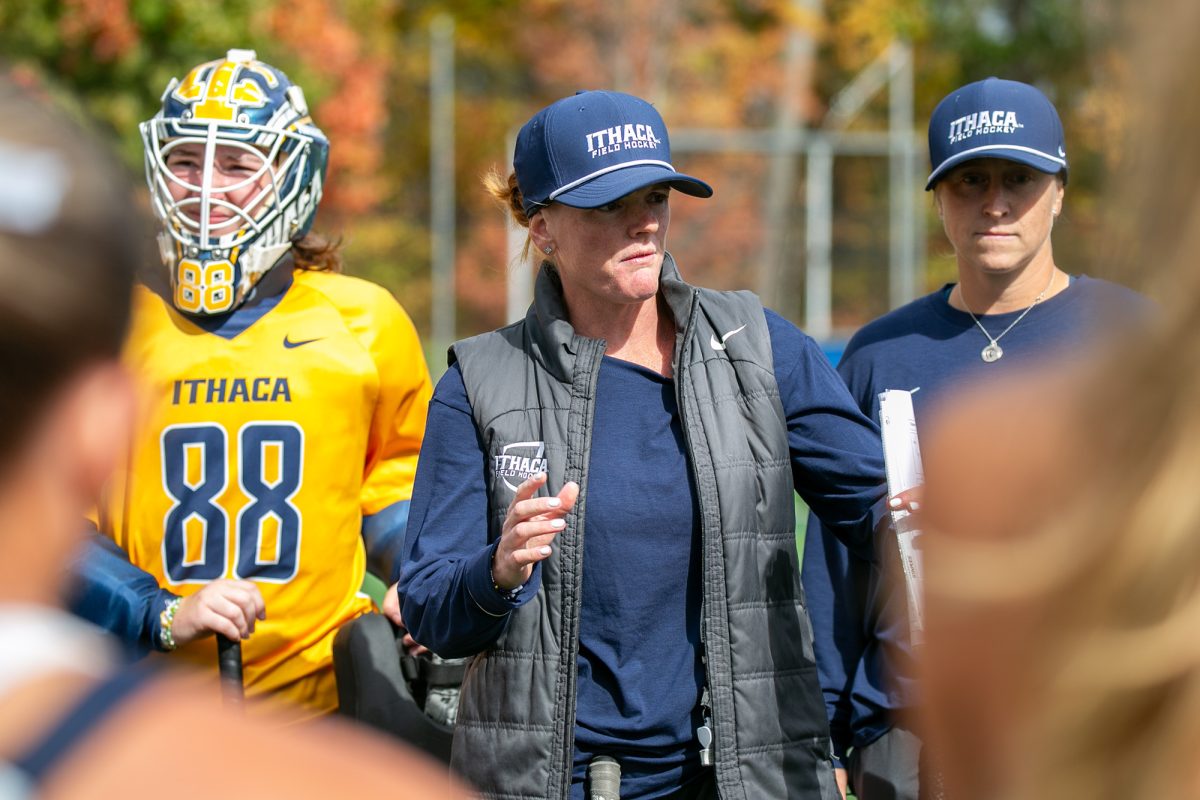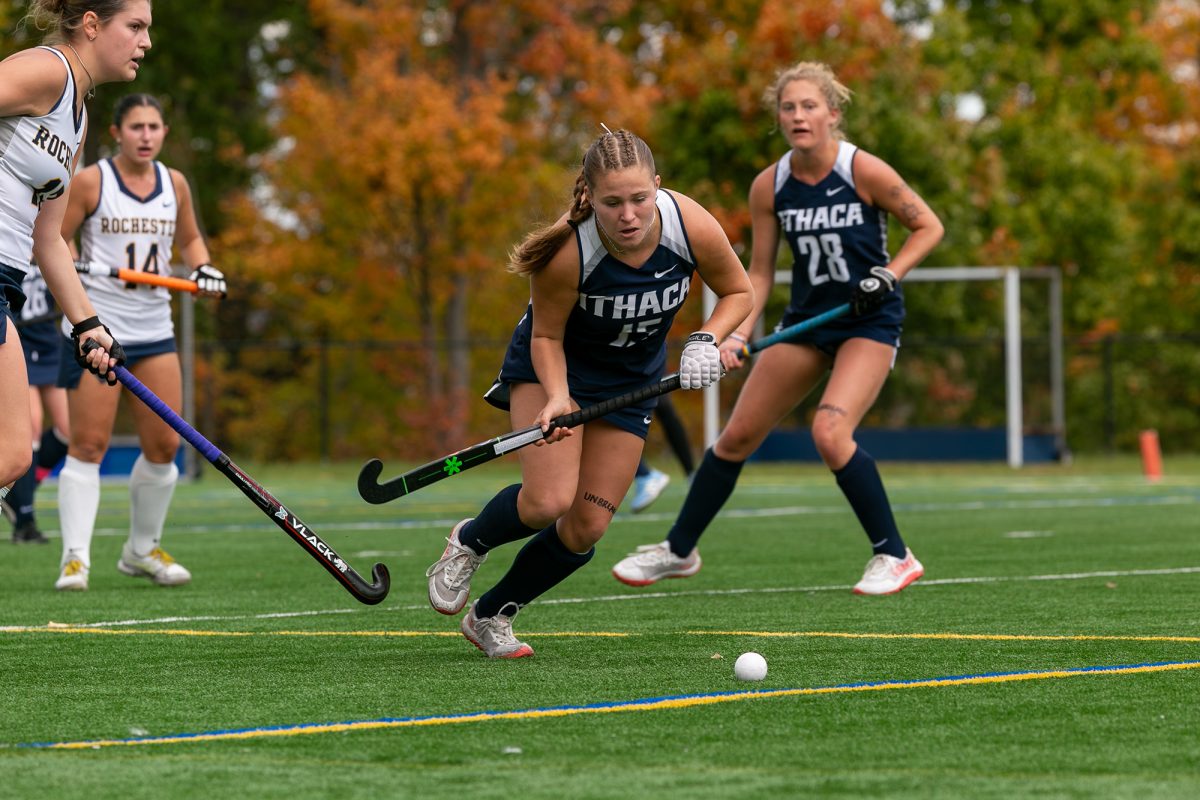During cross-country season, runners will avoid running the same distance every race by occasionally sitting out during a meet. In track and field, runners will run different events to give their bodies a rest and help them train for their main event at the end of the season.
In the Ithaca College track and field program, there are three different groups of distance runners: the mid-distance group, the hybrid group and the distance group. Each group runs a different set of events to peak at the end of the season during the championships.
In the mid-distance group, runners will compete in the 800-meter races with the occasional 400-meter race throughout the season. Hybrid runners will run the 1-mile race and will sometimes run the 800-meter race and the 3,000-meter race, while the distance runners will run the 1-mile, 3,000- and 5,000-meter races indoors with the 10,000-meter races during the outdoor season.
Erin Dinan, head women’s cross-country coach and assistant women’s track and field coach, said that running different events helps the athletes improve on their main events throughout the season.
“If you run the 800-meter and you run the 800-meter every weekend, you are never going to be able to really improve,” Dinan said. “The goal is to increase the threshold of which these athletes are able to push their body to the max.”
Dinan said that running shorter distances compared to an athlete’s main event will help the athletes develop a quicker turnover in their legs. When an athlete is improving their turnover, they are improving how many steps they take per minute. Shorter races help the athlete adjust to running faster, which will translate into their normal event.
At the beginning of the season, Dinan and Matt Wiehe, assistant men’s track and field coach, sit down with the runners and create a season-long plan to help the athlete peak during the Liberty League Championships, Regionals or Nationals. While the list is subject to change due to an athlete’s performances or injuries, it provides an outline of what event an athlete will run every track meet throughout the entire season.
Wiehe said that running different events every week helps a runner improve physically and mentally.
“It gets really mentally taxing to run the mile every single week, so we like to break it up and have them run events that are both shorter and longer to keep them mentally fresh,” Wiehe said. “Physically, we have them run a lot of different races as a workout to prepare them for their main event later in the year.”
Junior distance runner John Blake, whose main event is the 1-mile, said that his training could change for the week leading up to a meet if he is running a different event.
“We divide our workouts into three groups, so then I might do a longer distance workout, and I will workout with the 3K and 5K guys that day if I’m running a longer race,” Blake said. “If I’m going to do the 800-meter or the mile, but I need a little speed-workout, then I might work out with the 800-meter athletes.”
Senior mid-distance runner Sierra Grazia said that running different distances for track and field is different from how she trained in high school.
“Racing different races helps a lot, not only giving you a break from your main focus mentally but physically as well,” Grazia said. “Running only your race too much can put you in a rut. Working on speed or endurance through other races is an effective and efficient way of making the most of meets as well.”
Grazia said she likes the change in races every week during the season.
“My favorite thing about the different races is the different feelings that each distance and race gives you, they are all so unique,” Grazia said. “The 3K, I feel more comfortable finding a steady rhythm and flowing pace, whereas the mile tends to feel more upbeat and hyped just because they are faster races. Each race has its own personality in that way, which is cool to experience.”


